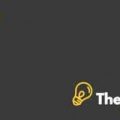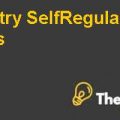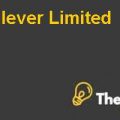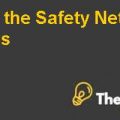Revenue Variance:
The actual revenue for the year ended 31 December 2009 was almost $850,000, while the budgeted revenue for the year was $820,000. The actual revenue was $30,000 more than the planned revenue.It can be said that,the revenue variance is favorable for the Kalamazoo zoo.
Expenditure Variance:
The budgeted expenditure for the year ended 31 December 2009 was $820,000 whereas, the total actual expenditure was $1,070,000. The actualexpenditure was $250,000 more than the budgeted expenditure, thus making the expenditure variance unfavorable by $250,000.
Question Two:
Revenue Quantity Variance:
The actualquantity of visitors for the year was 10000, while the budgeted quantity for the year was 15000. The actual number of visitors are 5000 lower than the planned number of visitors.Which is making the variance unfavorable or adverse for the Kalamazoo zoo, by 5000 number of visitors and $40,000 in monetary terms.
Price Variance:
The actual ticket price was $10 per visitor, on the other hand the budgeted price was $8 per visitor. The revenue price variance was favorable for the Kalamazoo Zoo,because actual fee per visitor is more than the planned number of visitor, thus making the variance favorable by $20,000.
The Kalamazoo Zoo Harvard Case Solution & Analysis
As the actual number of visitors are less than the plannedvisitors, this decrease in a number of visitors depicts that the management of Kalamazoo Zoo is struggling, to attract the adequate number of visitors to cover their expenditures. This decrease in a number of visitors can be justified, because of the difficult economic conditions of the region.In the depressed economy, the population spends less in entertainment and these kinds of activities,in order tosave the amount for fulfilling their basic needs. On the other hand, to cover the expenditure, the management of Kalamazoo Zoo increases the entrance fee by $2. This might also have an impact on the total number of visitors to the Zoo.
Question Three:
Expenditure Quantity Variance:
The budgeted quantity of animals of the zoo are 100, and the actual quantity of the animals in the zoo is 120. The quantity of the animals is more than the planned number of animals, which makes the expenditure quantity variance unfavorable for Kalamazoo Zoo by $48,000.
Food Price Variance:
The actual price that would be spent on the food of animal was $3000, while the budgeted expenditure on the food of per animal per year was $2400. As the expenditure on the food is more than the planned, this variance is also adverse for the Kalamazoo Zoo by $72,000.
Although the amount of the expenditure and the quantity of the animals, is more than the planned expenditure and quantity, both these variances are unfavorable in terms of financial consequences. But, it can be argued that,these increased expenditure and quantity can be favorable for the Kalamazoo Zoo. The increased expenditure on the foods of the animals can improve the health of the animals, this can increase the positive reputation of the Zoo.Plus the management of Zoo can also be in compliance with various strict laws and regulations, regarding the health of the animals. On the other hand, the increased quantity of the animals, can also be positive for the Zoo.It is highly likely that, the number of visitors will upsurge, due to this increased number of animals in the Zoo, which ultimately raises the fee collected from the visitors.......................
This is just a sample partial work. Please place the order on the website to get your own originally done case solution.








